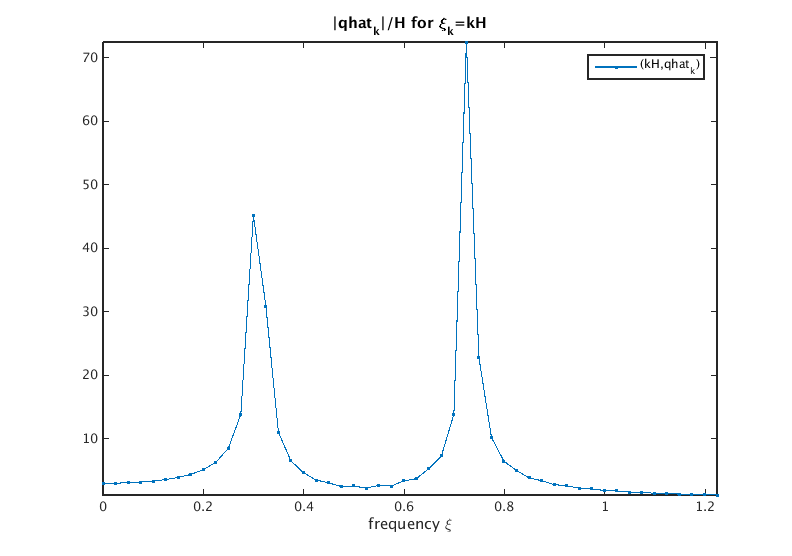Detecting frequencies contained in a discrete signal using the FFT
Contents
You need to download some m-files
Download the following m-files and put them in the same directory with your other m-files:
format compact % don't print blank lines between results
Define f(x) and find Fourier transform fhat(xi)
Here we define a signal which contains frequencies 0.31 and 0.73, and some smooth decaying function.
Note that the Fourier transforms contains delta functions concentrated at xi=.31, xi=-.31, xi=.73, xi=-.73.
syms x xi % set up symbolic variables Pi = sym('pi'); % and symbolic pi % signal which contains frequencies 0.31 and 0.73 f = 3*cos(0.31*2*Pi*x)-4*sin(0.73*2*Pi*x)+x*exp(-Pi*x^2); fhat = simple(Four(f,x,xi)) % find Fourier transform and simplify ezplot(f,[-20,20]); title('f(x)') % plot f
fhat = (3*dirac(xi - 31/100))/2 + (3*dirac(xi + 31/100))/2 + dirac(xi - 73/100)*2*i - dirac(xi + 73/100)*2*i - xi*exp(-pi*xi^2)*i
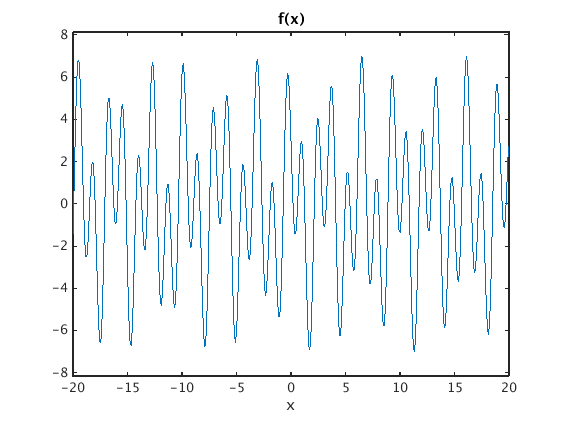
Take samples g_j = f(jh) for j=-M...M
h = 0.05; % spacing M = 400; N = 2*M+1; % number of values X = (-M:M)*h; % discrete x values g = double(subs(f,x,X)); % samples of f plot(X,g,'.') % plot samples xlabel('x'); title('samples g')
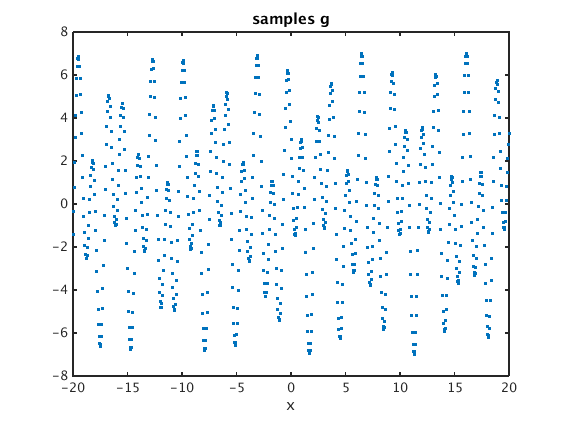
Find discrete Fourier transform
gs = ifftshift(g); % shift left half of signal to the right figure(1); plot(gs,'.'); xlabel('j'); title('signal with right half shifted to the left') qhat = four(gs); figure(2); plot(0:N-1,abs(qhat),'.'); xlabel('k'); title('|qhat_k|') qhats = fftshift(qhat); % shift right half to the left figure(3); plot(-M:M,abs(qhats),'.-'); xlim([-40 40]); xlabel('k') % show -40...40 on horizontal axis title('|qhat_k| (shifted back, zoomed in on center)')
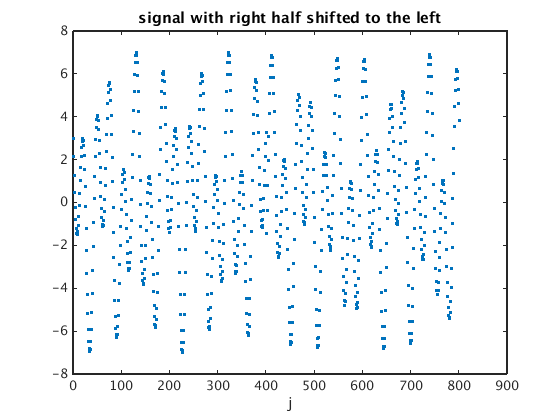
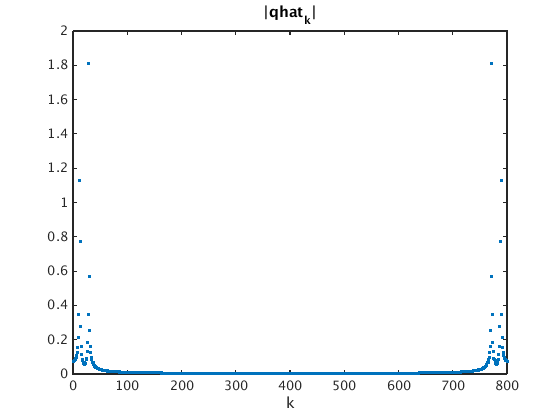
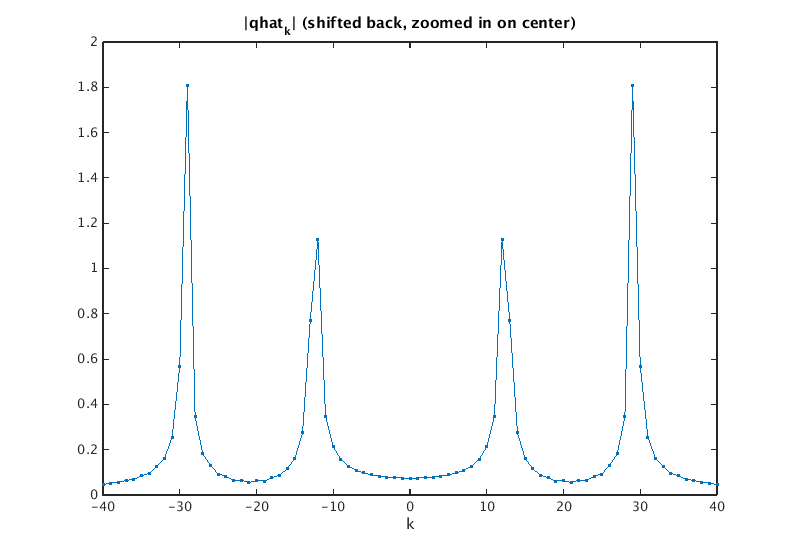
How is qhat related to fhat?
Answer: for H = 1/(N*h) we have that qhat_k/H approximates fhat(k*H).
Note that we see peaks near xi=0.2996 and xi=0.7241. This allows us to detect the frequencies contained in the discrete signal.
H = 1/(N*h); % spacing in frequency domain disp(' xi_k |qhat_k|') % print table of xi_k and |qhat_k| disp([(0:34)'*H, abs(qhat(1:35))']) plot((0:49)*H,abs(qhat(1:50))/H,'.-'); % plot points (k*H,|qhat_k|/H) axis tight title('|qhat_k|/H for \xi_k=kH') xlabel('frequency \xi'); legend('(kH,qhat_k)')
xi_k |qhat_k|
0 0.0742
0.0250 0.0747
0.0499 0.0763
0.0749 0.0789
0.0999 0.0831
0.1248 0.0886
0.1498 0.0974
0.1748 0.1089
0.1998 0.1276
0.2247 0.1565
0.2497 0.2120
0.2747 0.3453
0.2996 1.1280
0.3246 0.7702
0.3496 0.2744
0.3745 0.1621
0.3995 0.1160
0.4245 0.0871
0.4494 0.0759
0.4744 0.0616
0.4994 0.0637
0.5243 0.0552
0.5493 0.0662
0.5743 0.0635
0.5993 0.0835
0.6242 0.0923
0.6492 0.1314
0.6742 0.1819
0.6991 0.3449
0.7241 1.8101
0.7491 0.5684
0.7740 0.2548
0.7990 0.1608
0.8240 0.1245
0.8489 0.0958
